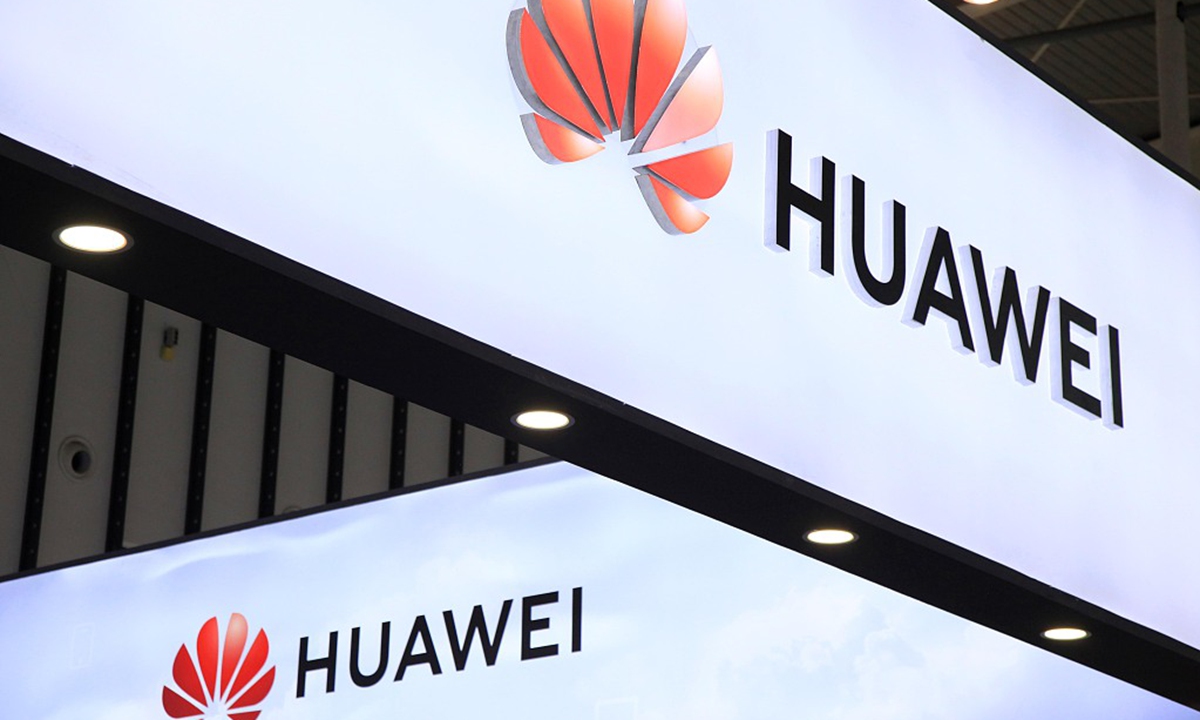
Huawei Photo: CFP
Chinese tech conglomerate Huawei posted its third consecutive fall in revenue in the second quarter while continuing a track record of earnings, its latest financial disclosure showed on Friday, pointing to a slowdown in its consumer business amid US sanctions combined with efforts to increase business resilience.
In the first half of the year, Huawei generated 320.4 billion yuan ($49.56 billion) in revenue, the company announced Friday.
This implies that its revenue for the second quarter totaled 168.2 billion yuan, while the quarterly reading for the prior year stood at 271.8 billion yuan, suggesting a plunge of 38 percent year-on-year, according to Global Times' calculation based on Huawei's financial reports.
The decline, the third in a row, came back on sagging revenues since the fourth quarter of 2020.
Huawei's carrier business revenue hit 136.9 billion yuan in the first half, its enterprise business revenue totaled 42.9 billion yuan while it booked 135.7 billion yuan consumer business.
Notably, net profit margin reached 9.8 percent in the first half of the year, up from 9.2 percent over the same period last year.
"We've set our strategic goals for the next five years," Eric Xu, Huawei's Rotating Chairman, said in a statement announcing the half-year results.
"Our aim is to survive, and to do so sustainably…Despite a decline in revenue from our consumer business caused by external factors, we are confident that our carrier and enterprise business-es will continue to grow steadily."
The revenue decline indicates that Huawei's smartphone sales continued to lose momentum over the past quarter amid ongoing external headwinds, creating a drag effect on overall revenue, Ma Jihua, a Beijing-based senior tech industry analyst, told the Global Times on Friday.
The besieged Chinese tech giant was added to a US export ban of semiconductors and equip-ment in May 2019, which has significantly impacted the firm's smartphone business.
In the second quarter of the year, Chinese smartphone vendor Xiaomi was only second behind Samsung on global smartphone shipment, accounting for a 17 percent share, a surge of 83 per-cent year-on-year. The other three vendors making the top five list were Apple and Chinese brands Oppo and Vivo, according to data from market consultancy Canalys.
This stands in sharp contrast with the rankings in the year before when Huawei sat atop the shipment rankings with a 19.6 percent of the global market over the second quarter of 2020, followed by Samsung, Apple, Xiaomi and Oppo, per Canalys numbers.
Nonetheless, as Ma put it, Huawei began to up the ante across its enterprise business even pri-or to the US crackdown, a trend that has been accelerated by the US sanctions.
Huawei's shift toward being enterprises-focused is bearing fruit, Ma remarked, citing its supplies of car-related technologies and services, enabling of digital transformation for outside companies.
Huawei's enterprise business is expected upward growth in revenue terms and accounts for a bigger part of its overall business, the analyst estimated.
"We are confident that our enterprise business will reach its annual targets. We expect our en-terprise business to grow steadily and remain the most promising growth engine for Huawei in 2021," the company said in a statement sent to the Global Times on Friday.
"We are confident that our carrier business will achieve moderate, but solid growth by the end of 2021," it added, disclosing that profits from the sale of Honor have not been included in its first-half business results.
Global Times




